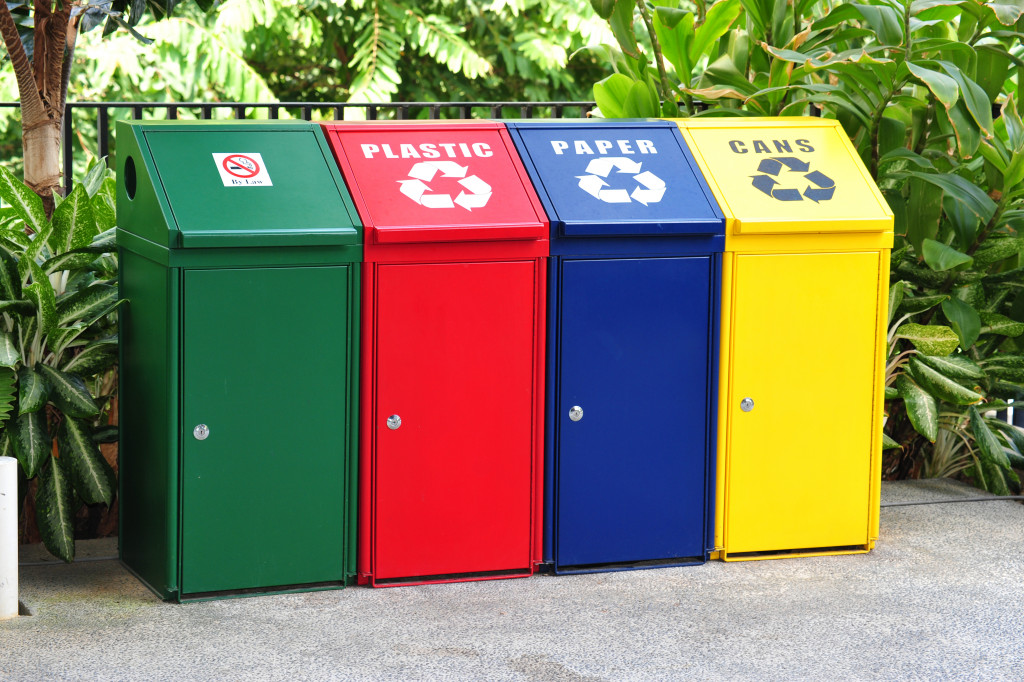The planet is drowning in single-use plastic. Around the world, patches of garbage, most of which are plastic products, are created from the estimated 8 million metric tons of plastic that flow into the ocean each year. It is predicted that, by 2050, there will be more plastic in the ocean than fish.
Plastic is a recyclable product, but most of it isn’t recycled. In the United States, for example, only a small percentage of all plastic is recycled. The rest either ends up in landfills or in our oceans.
Because of the urgency of the global plastic problem, there is more effort now than ever before to recycle plastic. In recent years, there have been a number of initiatives to increase the recycling of plastic products.
So, here’s how plastic is recycled.

Collecting Plastic for Recycling
Not all plastic can be recycled, unfortunately. There are certain types of plastic that can be recycled and others that cannot.
The types of plastic that can be recycled are typically called “recyclable plastics.” These plastics are usually labeled with a symbol on the product itself. The most common symbol for recyclable plastics is a triangle made up of three arrows pointing in different directions.
If a product doesn’t have a recycling symbol, it is most likely not recyclable.
Collection centers for recyclable plastics can be found in most cities. These centers are usually set up like a traditional landfill where people can drive up and dump their recyclables into large bins. The plastic is then collected and brought to a recycling plant.
The recycling process is not perfect, however. Sometimes, contaminants — such as metal or glass — are mixed in with plastic during the recycling process.
This can cause problems at the recycling plant. The contaminated plastic has to be sorted from the recyclable plastic, and the process of doing so is expensive and time-consuming. This is why it’s important to only put recyclable plastics in the recycling bin.
Making Plastic Out of Plastic
The recycling process for plastic is actually quite simple. The plastic is collected and then chopped into small pieces. The small pieces are then heated until they become liquid.
The liquid plastic is then poured into molds, where it cools and hardens into the desired shape — from the slabstock mold that is used in manufacturing to different plastic products such as bottles and furniture, to the small, intricate molds used for making coins.
The recycled plastic can also be used to make new packaging.
Is There Demand for Recycled Plastic?
There is a major demand for recycled plastic nowadays because consumers are, more than ever, aware of their environmental impact and seek ways to reduce it.
More people want to purchase products that are made with recycled materials. In fact, a lot of big brands, such as Coca-Cola, have pledged to use only recycled plastic in their packaging by 2030. Other big brands such as Adidas use post-consumer plastic, which is plastic that has already been used by consumers, in their products.
The recycled plastic market is expected to grow significantly in the years to come as the demand for sustainable products increases.
How Does Recycled Plastic Benefit the Environment?
There are many environmental benefits to using recycled plastic.
For one, recycling plastic helps reduce the amount of plastic that ends up in landfills and oceans. Recycling plastic also uses less energy than creating new plastic from scratch.
In addition, recycled plastic helps reduce the amount of greenhouse gases that are released into the atmosphere.
When new plastic is created from scratch, it takes a lot of energy to produce. Recycling plastic instead uses significantly less energy, which means fewer greenhouse gases are released into the atmosphere.
Recycling plastic also helps reduce the amount of oil that is used. It takes a lot of oil to produce new plastic, but recycled plastic uses significantly less oil.
All of these benefits make recycling plastic a more sustainable option than creating new plastic from scratch.
In addition, when you buy recycled plastic products, you’re not only helping the environment, but you’re also supporting the recycling industry. The recycling industry is a vital part of our economy and helps create jobs for people in the United States.
Plastic recycling is a process that helps reduce the amount of plastic that ends up in landfills and oceans. It also uses less energy than creating new plastic from scratch, and reduces the amount of greenhouse gases that are released into the atmosphere. When you buy recycled plastic products, you’re not only helping the environment, but you’re also supporting the recycling industry. Clearly, recycled plastic is the better option.
